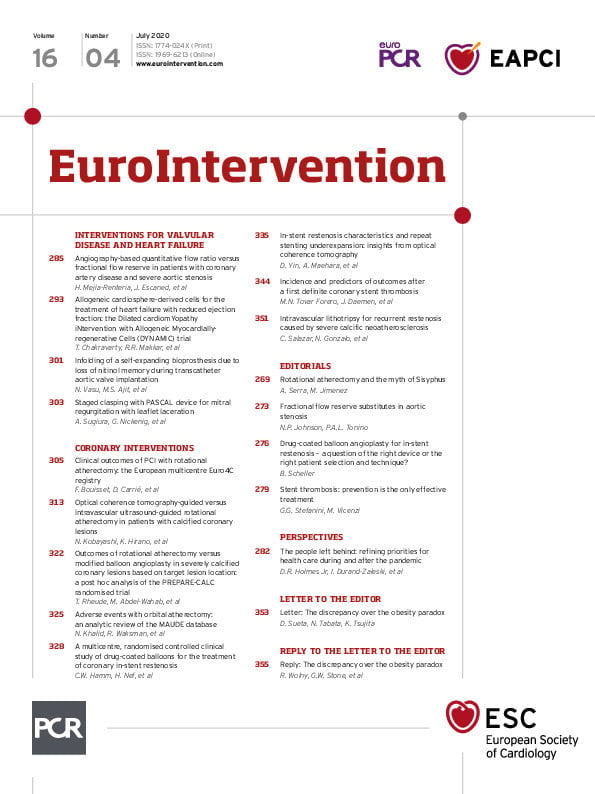
We read with great interest the article in which Wolny et al1 concluded that moderately increased body mass index (BMI) is associated with improved survival post percutaneous coronary intervention (PCI). We strongly agree with their opinions.
The prevalence of obesity has dramatically increased not only in developed countries but also in developing countries, and it has become a social problem worldwide. Accumulating longitudinal studies have suggested that obesity is an independent predictor of coronary artery disease, whereas it was also reported that BMI was inversely correlated with mortality in coronary artery disease patients. This led to the proposal of the concept called the “obesity paradox,” about which there are not yet any definite conclusions.
Recently, we reported that patients undergoing PCI with malignancy (history or current status) had significantly higher rates of adverse cardiovascular events but might not have the conventional prognostic factors2. The reason conventional prognostic factors do not apply in the malignant disease group is not clear, but the following reasons can be suggested. Because malignant diseases and atherosclerotic diseases share certain risk factors, it would be reasonable to expect malignant disease patients to have atherosclerotic diseases. Furthermore, malignant diseases and atherosclerosis lesions are both characterised by inflammation. We have already reported that the combination of malignancy and high high-sensitivity C-reactive protein level has been associated with significantly higher incidences of cardiovascular events3. Thus, we speculate that local malignancies increase vascular wall inflammation by increasing the levels of various inflammatory cytokines and that this circulatory inflammation causes progressive arteriosclerosis. Hence, one possibility as to why conventional prognostic factors do not apply to the malignant disease group is that malignancy itself might be a residual risk factor for cardiovascular events. Although Wolny et al stated that patients diagnosed with cancer were not included in most stent trials, three of the 13 clinical studies mentioned excluded current or planned chemotherapy for malignancy.
Finally, we believe that the “discrepancy over the obesity paradox” may underlie the presence or absence of malignant diseases. Incorporating the presence or absence of malignancy into the results shown by Wolny and colleagues may provide a mechanism for the discrepancy over the obesity paradox.
Acknowledgements
We thank the paramedical staff and clinical secretaries for their support with this work.
Conflict of interest statement
The authors have no conflicts of interest to declare.
Supplementary data
To read the full content of this article, please download the PDF.




